By Anni Reffsin
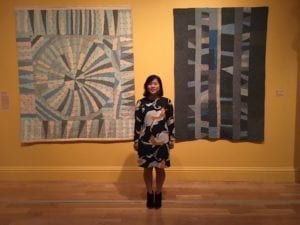 In the early spring, I came down to Washington DC to visit my Aunt. I mentioned to her that I had read about a local conservator in the Washington Post, named Julia Brennan. Shockingly, my aunt said Julia was in fact, her neighbor. “Why do you want to work with Julia? You’re in school for costumes,” my aunt asked. “How does conservation apply to theater?”
In the early spring, I came down to Washington DC to visit my Aunt. I mentioned to her that I had read about a local conservator in the Washington Post, named Julia Brennan. Shockingly, my aunt said Julia was in fact, her neighbor. “Why do you want to work with Julia? You’re in school for costumes,” my aunt asked. “How does conservation apply to theater?”
My answer came easily: “I would love to work with Julia because she works on upholding the integrity and longevity of textiles. Conservation applies in a relative way to costumes. We try to maintain the original intent of the costume designer, and apply certain methods to minimize the wear and tear a show may inflict,” I replied.
This was an auspicious trip. In July, I began my internship at Caring for Textiles. Lauren, one of the associates, gave me a sewing evaluation to see my handiwork. Once satisfied, Lauren presented me with my first project—Frederick Douglass’ quilt. My first conservation treatment lessons were about the application of protective netting or tulle overlays onto fragile and damaged areas. During the two weeks that I worked on this quilt, I had to adjust my perspective of textiles. With theatrical costumes, one works with the designer to help them realize their concepts and maintain their design. With conservation, one is a spokesperson for an object, its historical significance, and its legacy.

While working on Fredrick Douglass’ quilt I felt I was finally doing my due diligence as a public servant to this country.
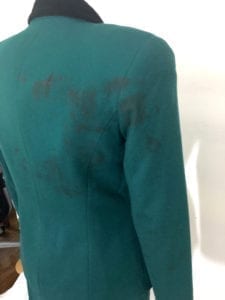
It is not our job as a conservator to clean the blood. It is to maintain the object in that moment.
What is the conservator’s responsibility with a blood-stained suit?
A Talbots suit came into the Studio. It was covered in dried blood.
I panicked that day. Not because of the blood on the women’s Talbots suit, but because of the gravity of how brave this individual had been to survive a bombing. The suit was now part of someone’s legacy—that of an American Ambassador. To best display it, an archival dress form was customized. Julia and Lauren worked on shaping the dress form with various paddings. I created arms for the mount.
Holey Flapper Dress!
Julia had me work independently on a 1920’s embroidered net flapper dress. When I wet cleaned this delicate garment, I learned the effects of acidity, dirt, and light on textiles. The dress was then placed on a dress form so that Julia and Lauren could determine how to best support the garment. I created a prop slip for the 1920’s dress. It’s considered a prop because it’s not the original slip, nor does it intend to be. The net of the dress had a multitude of holes, which needed support. A combination of conservation net and crepeline were used to repair the bodice of the dress. However, the skirt’s hem needed crepeline support throughout. The hardest part of conservation was hand stitching almost invisible thread with almost invisible fabric to support this holey textile. I now wear glasses.
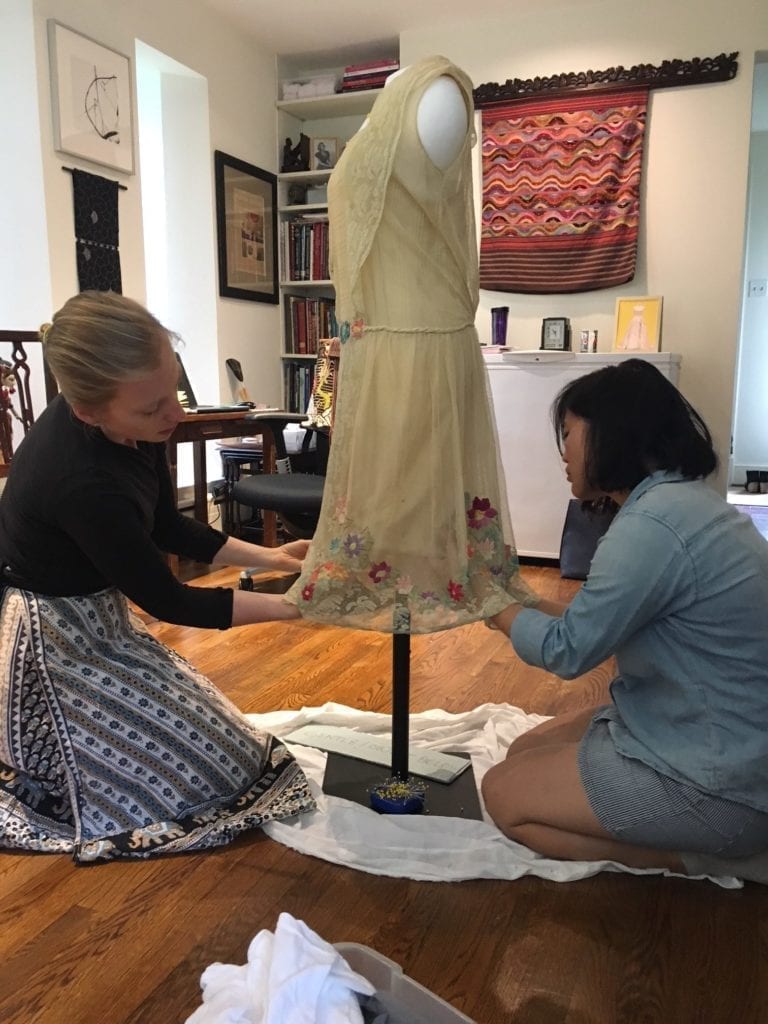
Two days at the Smithsonian…
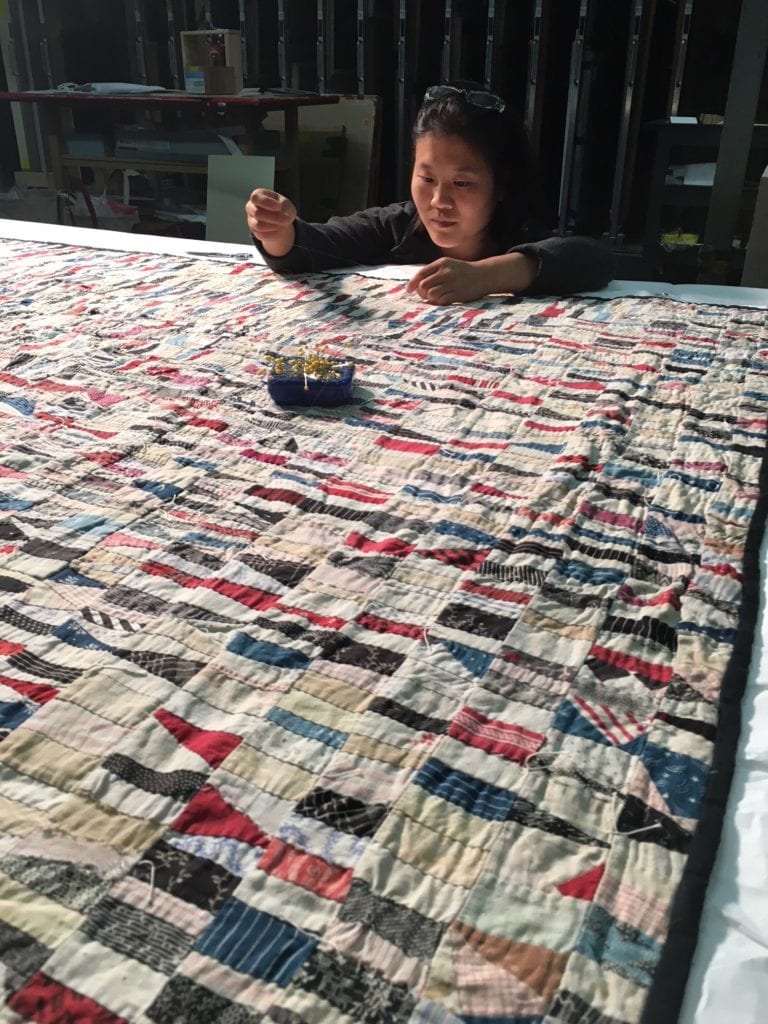
- Julia and I spent two days at the Smithsonian American Art Museum’s storage facility preparing five quilts for display.
- You can tell how serious the facility is by the temperature of the unit.
Back to school; Not a final goodbye…
Next week I will be in a car moving into my final year at the State University of New York at Purchase College. My senior year will be a series of “goodbyes” and “keep in touch.” I know this much, my time at Caring for Textiles is not a final goodbye. I will keep in touch, certainly. Ultimately, the legacy of my experience here will be on my ability to apply it to my future endeavors.
We are all connected, woven in the universe, with a single stitch of thread. Every time I sew, I pay homage to all the individuals who have supported me. Julia, Lauren, and Kaitlyn are now part of my meditation.
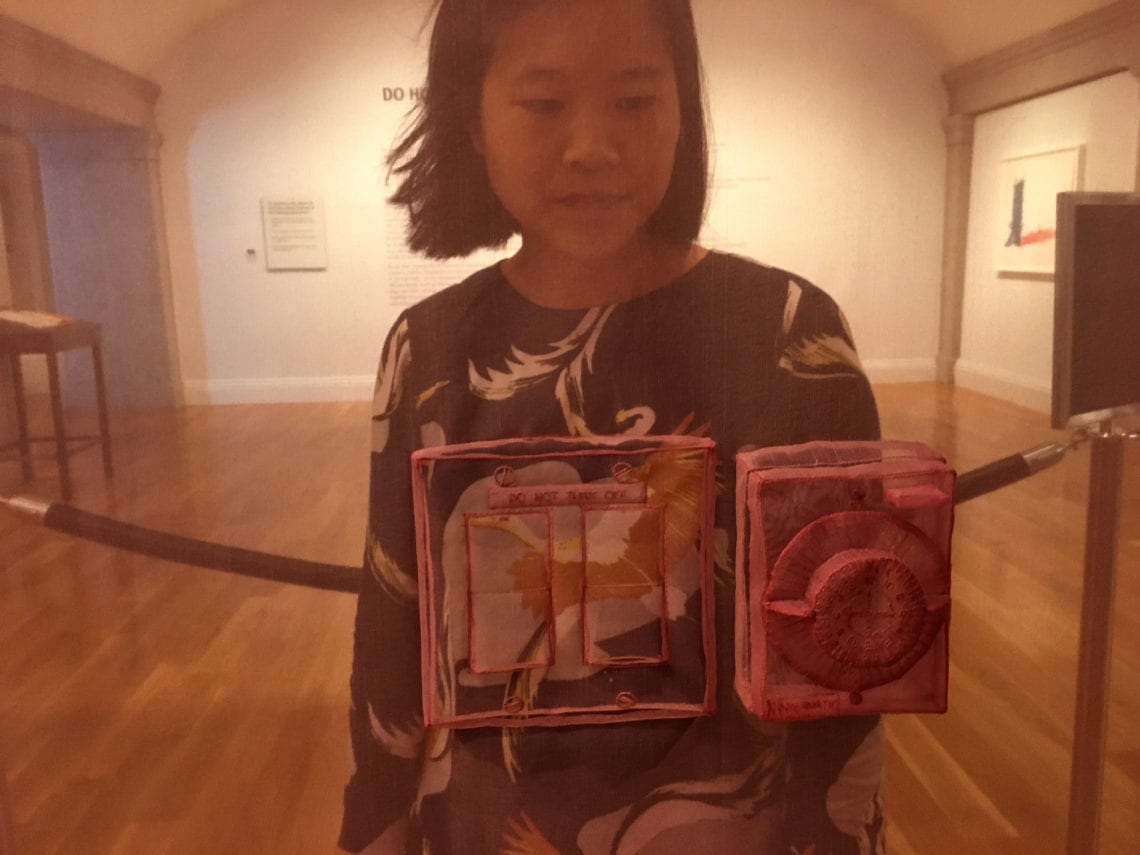
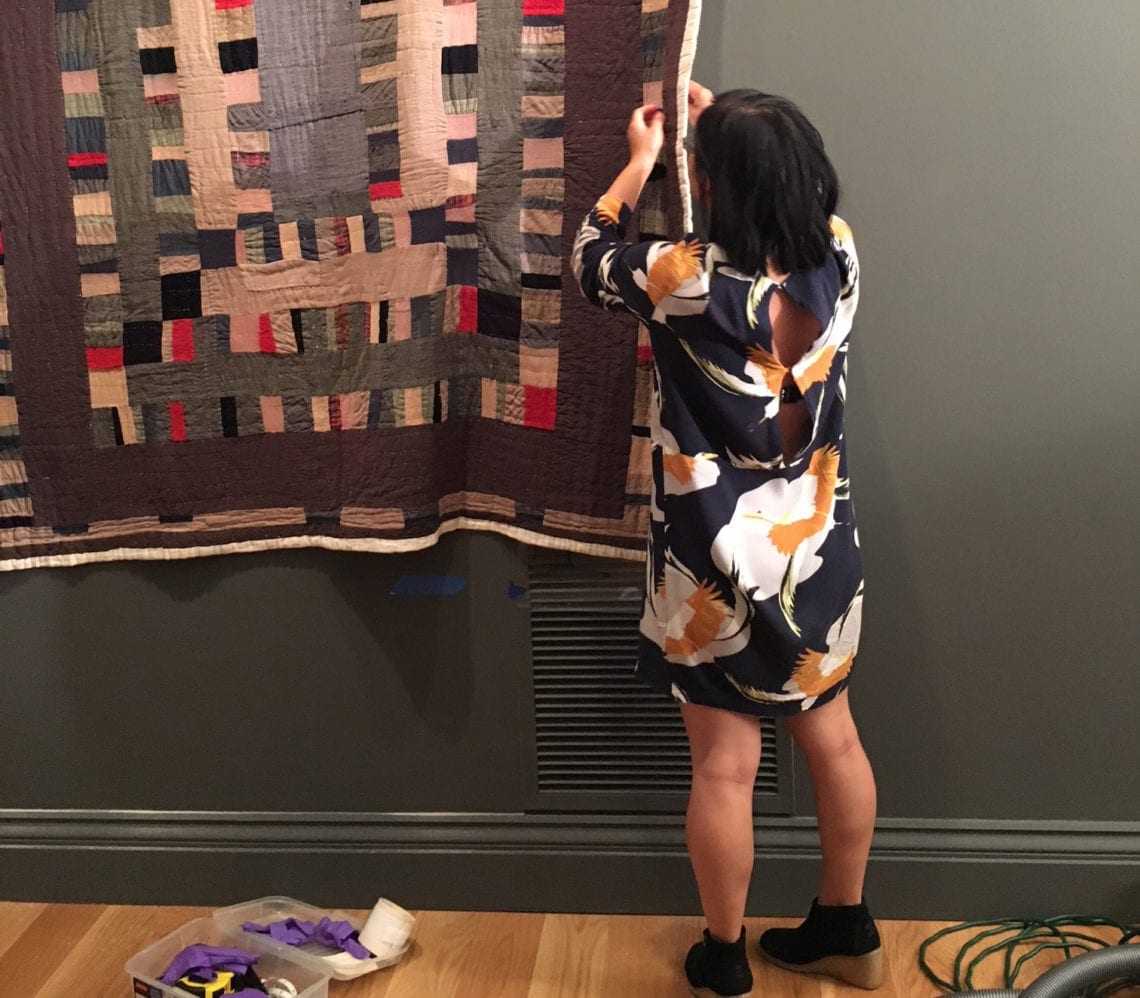


Kudos to you, Anni, for such a reflective blog. Best wishes for continuing success in your future work with textiles.
A beautiful recounting of your experience as a textile conservation intern. Aesthetics is a major component of how both the collector and the conservator preserve history and you were part of this chain.
Nice job, reflecting on the very basic quality of the inter-connectedness of all of us who do this work. It is both a privilege and responsibility, I feel, to lead one’s life doing this work.
Having had a lovely and productive experience as Julia worked on a piece for me,, I can imagine what you have gained from your internship. Thank you for sharing, and best wishes!